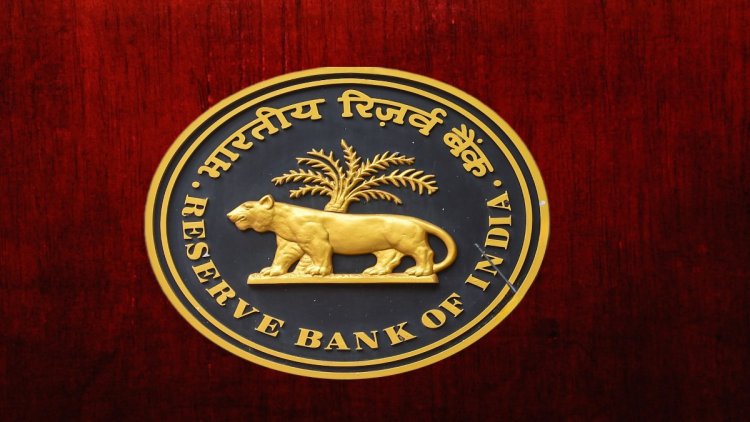Govt set for up to Rs 2.75 lakh crore bonanza from RBI
The Indian government is set to receive a record dividend of up to ₹2.75 lakh crore from the RBI, driven by strong gains from domestic bonds and forex operations. This “bonanza” will boost fiscal resources, reduce borrowing needs, and inject surplus liquidity into the banking system. While it strengthens the Centre’s balance sheet, it also poses challenges like managing inflation and excess liquidity. Experts suggest using the funds for infrastructure, debt reduction, and skill development—especially in areas like Certified Corporate Accounting, SAP FICO (Finance & Controlling), and Taxation (Income Tax & GST). The real impact will depend on how effectively the government channels this windfall into long-term growth and capacity building.

The Indian government is poised to receive a historic windfall from the Reserve Bank of India (RBI), with estimates putting the dividend transfer in the range of ₹ 2.25 lakh crore to ₹ 2.75 lakh crore. This “bonanza” could significantly augment the Centre’s fiscal resources, alter liquidity conditions in the banking system, and open up fresh policy space. In this article, we explore the likely impacts, risks, and potential for channeling this inflow into long-term development—especially in domains like finance, taxation, and skill development.
How the RBI dividend arises
Before diving into consequences, let’s understand why such a large payout is feasible. The RBI generates income from multiple sources: interest from domestic government bonds, yields from foreign exchange reserves, gains from currency operations, and liquidity management operations. In the fiscal year 2024–25, the RBI’s domestic bond holdings generated gains of about ₹ 1.95 lakh crore.
Moreover, active forex operations—selling dollars to stabilize the rupee amid volatility—contributed to the surplus. The RBI retains a portion of profits to maintain reserves and contingency buffers under its Economic Capital Framework; the remainder is transferred to the government as a dividend. Given the strong performance of both domestic and foreign assets, analysts project the payout could reach the upper range of ₹ 2.75 lakh crore.
Fiscal boost and liquidity surge
Strengthening the government’s balance sheet
This bonanza would meaningfully strengthen the government’s fiscal position. It provides non-tax, non-borrowed resources that can help bridge revenue shortfalls, mitigate the need for additional borrowing, or support increased capital expenditure. In a year when managing the fiscal deficit is closely watched, such an inflow offers welcome fiscal flexibility.
Surge in surplus liquidity
One immediate effect is that it injects liquidity into the banking system. Surplus liquidity is expected to rise to around ₹ 5.5–6.0 lakh crore post the dividend transfer. With more funds in the banking system, short-term interest rates may soften, particularly the weighted average call rate, which might move closer to the standing deposit facility (SDF) rate (~5.75%).
Such easing could reduce borrowing costs for banks, and over time trickle down to corporates, MSMEs, and consumers. However, managing and absorbing excess liquidity will be a challenge for monetary authorities, who may have to calibrate tools such as reverse repos, open market operations, or variable rate instruments.
Policy, growth, and risk implications
Monetary policy calibration
Given this windfall, the RBI’s Monetary Policy Committee (MPC) may find itself with more room to be accommodative—or at least less aggressive—in fighting inflation. While rates are likely to remain unchanged in the near term, the surplus liquidity might soften the tone of future policy statements.
Growth and infrastructure push
If directed wisely, the additional funds can support infrastructure projects—roads, rail, digital connectivity—and social programmes, stimulating job creation and demand. That said, the timing and deployment of funds will matter hugely for real impact.
Risks to monitor
-
Inflation pressures: Excess liquidity can stoke inflation if demand picks up too fast, especially in a tight supply environment.
-
Policy dependence: Overreliance on such one-time windfalls can reduce discipline in tax collection or revenue mobilization.
-
Market distortions: If liquidity is not absorbed properly, distortions in short-term rates, asset prices, or yield curves may arise.
Aligning with skill development and capacity building
This moment also offers a unique opportunity to invest in human capital, especially in sectors that power the knowledge economy—such as accounting, finance, taxation, and technology. Skill development initiatives can multiply the long-term returns of fiscal stimulus.
In this light, institutions offering Certified Corporate Accounting or advanced modules like SAP FICO (Finance & Controlling) can leverage the momentum to expand reach, upgrade infrastructure, and partner with government-supported skill schemes. Similarly, training in Taxation (Income Tax & GST)—a domain of critical public importance—can be scaled up, reaching underserved geographies.
Imagine a scheme where a portion of the dividend is earmarked to subsidize short-term certification courses in accounting, GST compliance, financial software (like SAP), or digital finance tools—so that fresh graduates, backlog youth, or reskilling adults can gain quicker employability. This would not only raise financial literacy and tax compliance but also create a pipeline of trained talent for the industry, public sector, and services.
Strategic suggestions for deployment
To ensure the “bonanza” has a durable impact and not just short-lived headline effects, here are recommendations:
-
Ring-fence a portion for skill enhancement
Perhaps allocate 5–10 % of the dividend proceeds to a national fund for upskilling and reskilling in high-demand financial and accounting streams (Certified Corporate Accounting, SAP FICO, Taxation, digital finance tools). -
Accelerate public investment
Bring forward capital expenditure projects in infrastructure, energy transition, and logistics that have high employment multipliers. -
Debt reduction or liability management
Use part of the funds to reduce interest payments on debt or to redeem high-cost borrowings. -
Strengthen revenue mobilization
Don’t let the windfall dull the urgency for tax reform, GST base expansion, and improved compliance systems. -
Monetary absorption mechanisms
Empower the RBI with tools to absorb excess liquidity — via variable rate reverse repos, Treasury bill issuances, or fine-tuned open market operations.
Conclusion
The headline — “Govt set for up to Rs 2.75 lakh crore bonanza from RBI” — is not a mere hyperbole. It underscores a rare convergence of strong central bank earnings, favorable market conditions, and an enabling policy environment. If managed prudently, this windfall can become a lever to catalyze growth, enhance fiscal stability, and seed long-term development initiatives.
But the real test lies not in the size of the dividend, but in how efficiently and fairly the government channels it toward productive investment and capacity building. Embedding this into sectors like accounting, financial training, taxation education, and governance can create a virtuous cycle—lowering fiscal burdens, increasing citizen compliance, and nurturing talent for India’s evolving economy.
What's Your Reaction?















